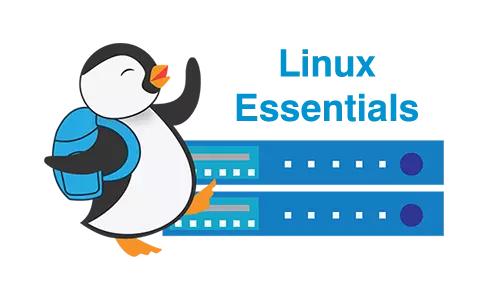Topic 1: The Linux Community and a Career in Open Source
۱.۱ Linux Evolution and Popular Operating Systems (weight: 2)
| Weight | ۲ |
| Description | Knowledge of Linux development and major distributions. |
Key Knowledge Areas:
- Distributions
- Embedded Systems
- Linux in the Cloud
The following is a partial list of the used files, terms and utilities:
- Debian, Ubuntu (LTS)
- CentOS, openSUSE, Red Hat, SUSE
- Linux Mint, Scientific Linux
- Raspberry Pi, Raspbian
- Android
۱.۲ Major Open Source Applications (weight: 2)
| Weight | ۲ |
| Description | Awareness of major applications as well as their uses and development. |
Key Knowledge Areas:
- Desktop applications
- Server applications
- Development languages
- Package management tools and repositories
The following is a partial list of the used files, terms and utilities:
- OpenOffice.org, LibreOffice, Thunderbird, Firefox, GIMP
- Nextcloud, ownCloud
- Apache HTTPD, NGINX, MariaDB, MySQL, NFS, Samba
- C, Java, JavaScript, Perl, shell, Python, PHP
- dpkg, apt-get, rpm, yum
۱.۳ Open Source Software and Licensing (weight: 1)
| Weight | ۱ |
| Description | Open communities and licensing Open Source Software for business. |
Key Knowledge Areas:
- Open source philosophy
- Open source licensing
- Free Software Foundation (FSF), Open Source Initiative (OSI)
The following is a partial list of the used files, terms and utilities:
- Copyleft, Permissive
- GPL, BSD, Creative Commons
- Free Software, Open Source Software, FOSS, FLOSS
- Open source business models
۱.۴ ICT Skills and Working in Linux (weight: 2)
| Weight | ۲ |
| Description | Basic Information and Communication Technology (ICT) skills and working in Linux. |
Key Knowledge Areas:
- Desktop skills
- Getting to the command line
- Industry uses of Linux, cloud computing and virtualization
The following is a partial list of the used files, terms and utilities:
- Using a browser, privacy concerns, configuration options, searching the web and saving content
- Terminal and console
- Password issues
- Privacy issues and tools
- Use of common open source applications in presentations and projects
Topic 2: Finding Your Way on a Linux System
۲.۱ Command Line Basics (weight: 3)
| Weight | ۳ |
| Description | Basics of using the Linux command line. |
Key Knowledge Areas:
- Basic shell
- Command line syntax
- Variables
- Quoting
The following is a partial list of the used files, terms and utilities:
- Bash
- echo
- history
- PATH environment variable
- export
- type
۲.۲ Using the Command Line to Get Help (weight: 2)
| Weight | ۲ |
| Description | Running help commands and navigation of the various help systems. |
Key Knowledge Areas:
- Man pages
- Info pages
The following is a partial list of the used files, terms and utilities:
- man
- info
- /usr/share/doc/
- locate
۲.۳ Using Directories and Listing Files (weight: 2)
| Weight | ۲ |
| Description | Navigation of home and system directories and listing files in various locations. |
Key Knowledge Areas:
- Files, directories
- Hidden files and directories
- Home directories
- Absolute and relative paths
The following is a partial list of the used files, terms and utilities:
- Common options for ls
- Recursive listings
- cd
- . and ..
- home and ~
۲.۴ Creating, Moving and Deleting Files (weight: 2)
| Weight | ۲ |
| Description | Create, move and delete files and directories under the home directory. |
Key Knowledge Areas:
- Files and directories
- Case sensitivity
- Simple globbing
The following is a partial list of the used files, terms and utilities:
- mv, cp, rm, touch
- mkdir, rmdir
Topic 3: The Power of the Command Line
۳.۱ Archiving Files on the Command Line (weight: 2)
| Weight | ۲ |
| Description | Archiving files in the user home directory. |
Key Knowledge Areas:
- Files, directories
- Archives, compression
The following is a partial list of the used files, terms and utilities:
- tar
- Common tar options
- gzip, bzip2, xz
- zip, unzip
۳.۲ Searching and Extracting Data from Files (weight: 3)
| Weight | ۳ |
| Description | Search and extract data from files in the home directory. |
Key Knowledge Areas:
- Command line pipes
- I/O redirection
- Basic Regular Expressions using ., [ ], *, and ?
The following is a partial list of the used files, terms and utilities:
- grep
- less
- cat, head, tail
- sort
- cut
- wc
۳.۳ Turning Commands into a Script (weight: 4)
| Weight | ۴ |
| Description | Turning repetitive commands into simple scripts. |
Key Knowledge Areas:
- Basic shell scripting
- Awareness of common text editors (vi and nano)
The following is a partial list of the used files, terms and utilities:
- #! (shebang)
- /bin/bash
- Variables
- Arguments
- for loops
- echo
- Exit status
Topic 4: The Linux Operating System
۴.۱ Choosing an Operating System (weight: 1)
| Weight | ۱ |
| Description | Knowledge of major operating systems and Linux distributions. |
Key Knowledge Areas:
- Differences between Windows, OS X and Linux
- Distribution life cycle management
The following is a partial list of the used files, terms and utilities:
- GUI versus command line, desktop configuration
- Maintenance cycles, beta and stable
۴.۲ Understanding Computer Hardware (weight: 2)
| Weight | ۲ |
| Description | Familiarity with the components that go into building desktop and server computers. |
Key Knowledge Areas:
- Hardware
The following is a partial list of the used files, terms and utilities:
- Motherboards, processors, power supplies, optical drives, peripherals
- Hard drives, solid state disks and partitions, /dev/sd*
- Drivers
۴.۳ Where Data is Stored (weight: 3)
| Weight | ۳ |
| Description | Where various types of information are stored on a Linux system. |
Key Knowledge Areas:
- Programs and configuration
- Processes
- Memory addresses
- System messaging
- Logging
The following is a partial list of the used files, terms and utilities:
- ps, top, free
- syslog, dmesg
- /etc/, /var/log/
- /boot/, /proc/, /dev/, /sys/
۴.۴ Your Computer on the Network (weight: 2)
| Weight | ۲ |
| Description | Querying vital networking configuration and determining the basic requirements for a computer on a Local Area Network (LAN). |
Key Knowledge Areas:
- Internet, network, routers
- Querying DNS client configuration
- Querying network configuration
The following is a partial list of the used files, terms and utilities:
- route, ip route show
- ifconfig, ip addr show
- netstat, ss
- /etc/resolv.conf, /etc/hosts
- IPv4, IPv6
- ping
- host
Topic 5: Security and File Permissions
۵.۱ Basic Security and Identifying User Types (weight: 2)
| Weight | ۲ |
| Description | Various types of users on a Linux system. |
Key Knowledge Areas:
- Root and standard users
- System users
The following is a partial list of the used files, terms and utilities:
- /etc/passwd, /etc/shadow, /etc/group
- id, last, who, w
- sudo, su
۵.۲ Creating Users and Groups (weight: 2)
| Weight | ۲ |
| Description | Creating users and groups on a Linux system. |
Key Knowledge Areas:
- User and group commands
- User IDs
The following is a partial list of the used files, terms and utilities:
- /etc/passwd, /etc/shadow, /etc/group, /etc/skel/
- useradd, groupadd
- passwd
۵.۳ Managing File Permissions and Ownership (weight: 2)
| Weight | ۲ |
| Description | Understanding and manipulating file permissions and ownership settings. |
Key Knowledge Areas:
- File and directory permissions and ownership
The following is a partial list of the used files, terms and utilities:
- ls -l, ls -a
- chmod, chown
۵.۴ Special Directories and Files (weight: 1)
| Weight | ۱ |
| Description | Special directories and files on a Linux system including special permissions. |
Key Knowledge Areas:
- Using temporary files and directories
- Symbolic links
The following is a partial list of the used files, terms and utilities:
- /tmp/, /var/tmp/ and Sticky Bit
- ls -d
- ln -s



